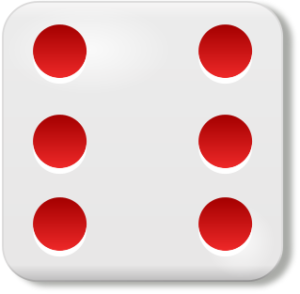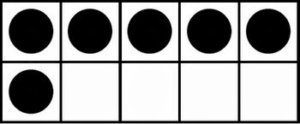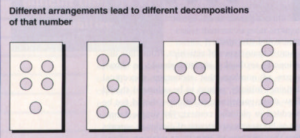Subitizing comes from the Latin word for “suddenly” and refers to our ability to instantly see how many dots or objects exist in front of them. Without counting, are you able to instantly recognize what number you rolled when you see this on a die? 
If so, then you are able to subitize the value 6 in that formation. But how about these images?


Was one image easier to see 6 without counting? Which one helps you to see that 6 is one more than 5?
In kindergarten, students develop their understanding of number values, especially 0-10. Children also realize that when I have the same number of objects, I can move them around and still have the same number (Conservation of Number). Through subitizing, children demonstrate their understanding of the number by instantly identifying the value without having to count every dot or object.
Subitizing can also benefit students by helping them to develop an understanding of breaking numbers apart and using addition to combine them back together. For example thinking of the images below, they may help a child to think 5 can be made as: (4 + 1), (2 + 1 + 2), (2 + 3), or (1 + 1 + 1 + 1 + 1). 
Watch a few minutes from this video showing a class of kindergarteners working on their subitizing skills with 8 objects on a ten-frame. Think about how the imagery and their conversation help to ingrain the value of 8 in the students’ thinking.
For more information on subitizing, check out this article – Subitizing: What is it? Why teach it? by Douglas H. Clements